Freshtech Solutions Project 7 GTX 1080 Gaming PC Review
John Williamson / 8 years ago
Introduction
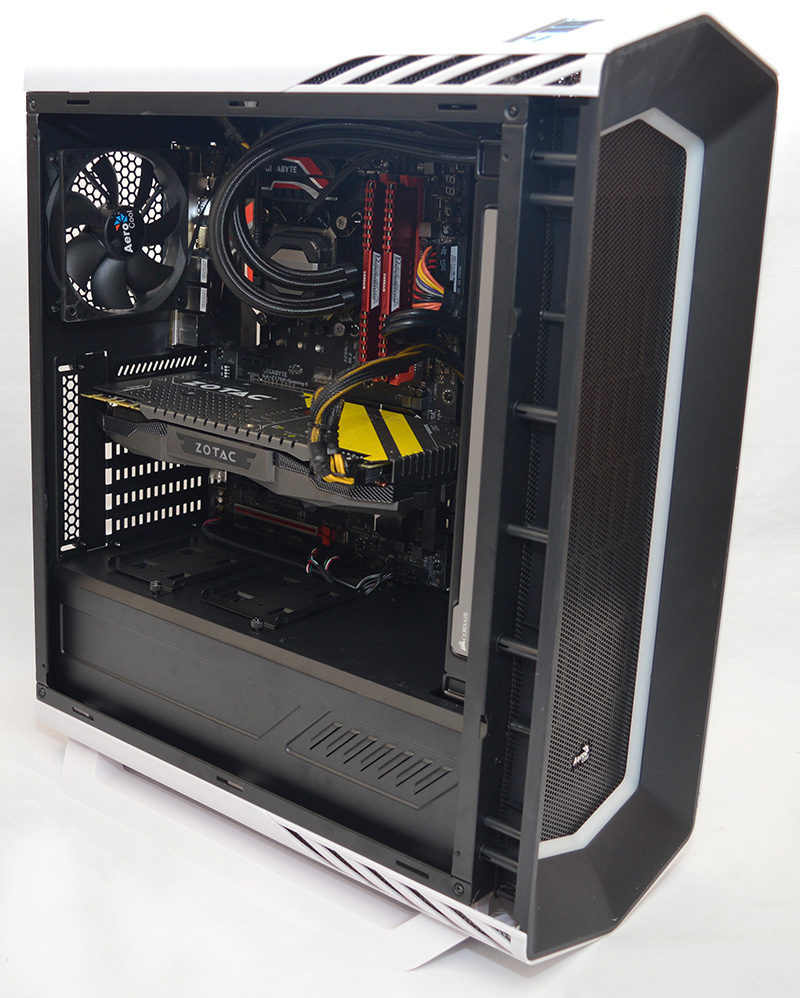
Whenever a new piece of hardware is released, it provides systems integrators with the opportunity to conjure up innovative builds which have a unique sense of style. During the past few months, RGB lighting has become incredibly popular and allowed consumers to enjoy an attractive PC based on their favourite colour. While some critics argue the reliance on flamboyant RGB lighting is going to become tiresome after a while, this doesn’t appear to be the case right now. Even if you’re not an advocate of ostentatious colour combinations, the customisable lighting can be switched off to create a more understated appearance. I mention the importance of RGB illumination because Freshtech Solutions latest pre-configured system is built around an intriguing new chassis from Aerocool.
The FreshTech Solutions Project 7 comes with an Intel Core i5-6600K overclocked to 4.4GHz, Corsair Vengeance 16GB LPX DDR4 3000MHz memory and the Zotac GTX 1080 AMP Edition. Not only that, the system is powered by an EVGA 700-watt PSU which opts for a non-modular design, Samsung 850 EVO 500GB boot drive and a secondary 1TB device for mass storage. On another note, the CPU is kept under control by Corsair’s dependable H110i GT liquid cooler and should run at a gentle fan curve. This fantastic combination of hand-picked components is installed in the unique Aerocool Project 7 case and looks spectacular. Even though the price hasn’t been finalised, Freshtech Solutions informs me it should be around £1399. This is higher than initially planned due to the weaker GBP to USD ratio. Whatever the case, the system looks very promising and I cannot wait to examine it in greater detail.
Specifications
- Name: Freshtech Solutions Project 7
- Case: Aerocool Project 7
- Motherboard: Gigabyte Z170X-Gaming 5
- Processor: Intel Core i5-6600K Overclocked to 4.4GHz
- Processor Cooler: Corsair H110i GT Hydro Liquid Cooler
- System Memory: Corsair Vengeance LPX 16GB dual-channel DDR4 3000MHz
- Main Boot Drive: Samsung 500GB 850 EVO SSD
- Additional Storage Drive(s): Western Digital Blue 1TB 7200RPM
- Graphics card: Zotac GTX 1080 AMP Edition 8GB GDDR5X
- Power Supply: EVGA 700B 700-watt 80+ Bronze non-modular
- Peripherals: N/A
- Monitor: N/A
- Optical Drive: N/A
- Wireless: N/A
- OS: Windows 10 Home
- Warranty: 3-years collect and return (1-year collect, 2-years parts, 3-years labour)
- Price: £1599
Packaging and Accessories
The Freshtech Solutions Project 7 arrives in a substantial box which protects the item exceedingly well. In particular, the durable cardboard is difficult to tear and the precautionary notice ensures the courier adopts a gentle approach. Also, the side handles make it easier to carry and reduce the likelihood of the system being dropped.
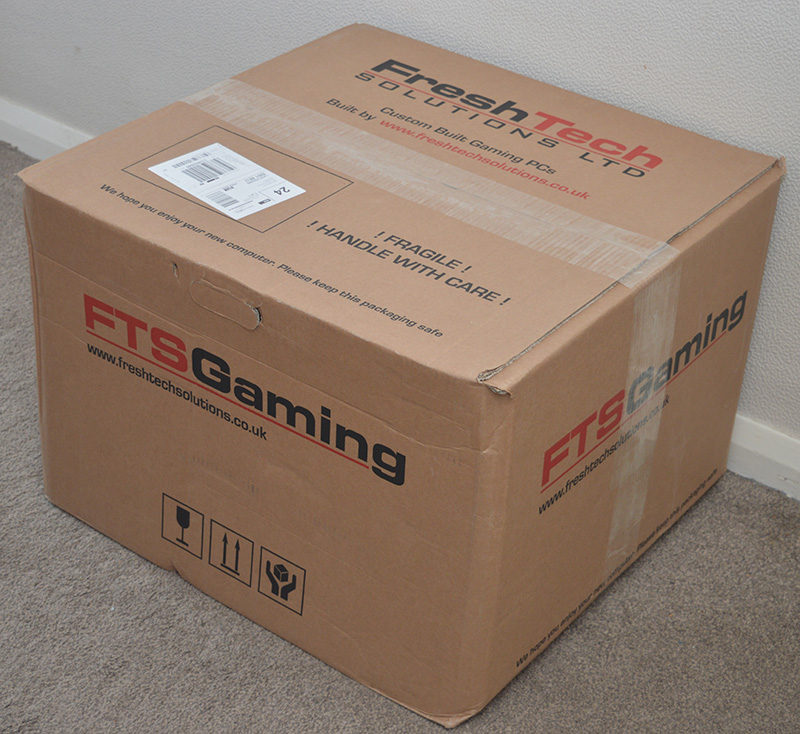
Once opened, we can see the main chassis box is securely held in place with foam supports on the top. Given the system’s hefty weight, the foam layers haven’t really got a purpose apart from some light cushioning. Even though Freshtech Solutions could have deployed airbags, it wouldn’t have improved the packaging in a major way and the chassis’ box should be ample. As you can see, the accessories are neatly contained within the motherboard’s box which creates a more enjoyable unboxing experience.
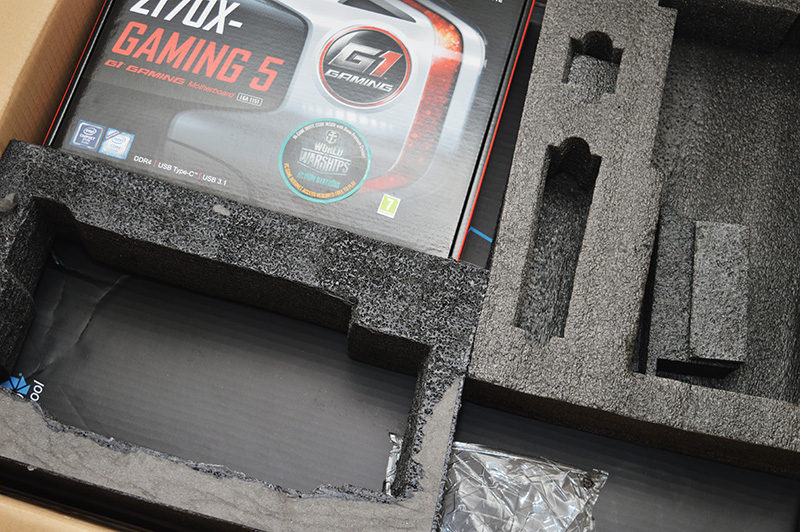
The Aerocool Project 7 chassis packaging is quite mysterious and doesn’t allude about product’s design. Nevertheless, the box is quite strong and able to withstand the perils of delivery rather well.
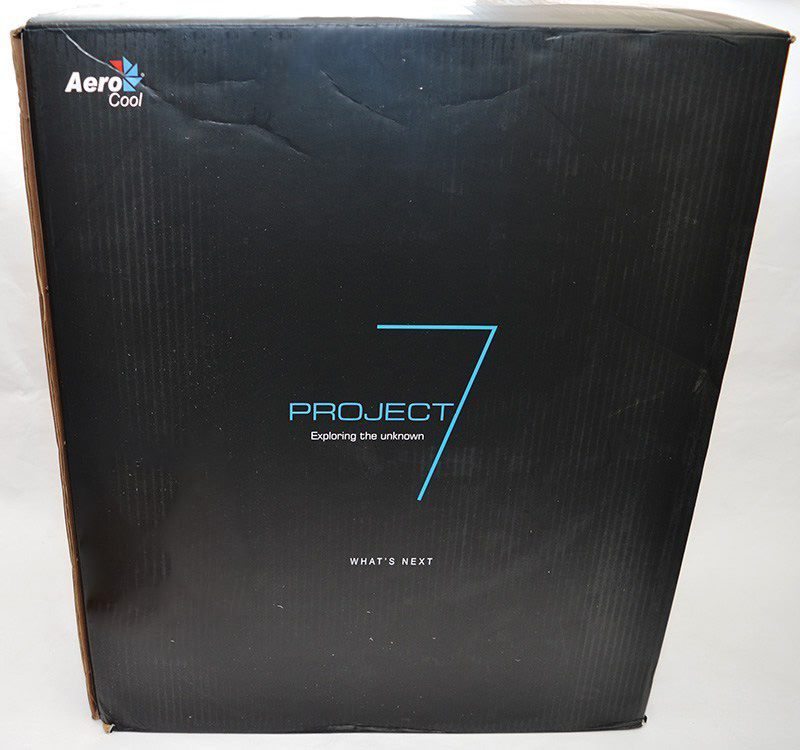
Before you can access the system, the end-user is presented with a warning message informing them to remove any internal packaging materials. This is a vital step because switching the system on with the foam inserts in place could cause the graphics card’s fans to be damaged as they push against the supports.
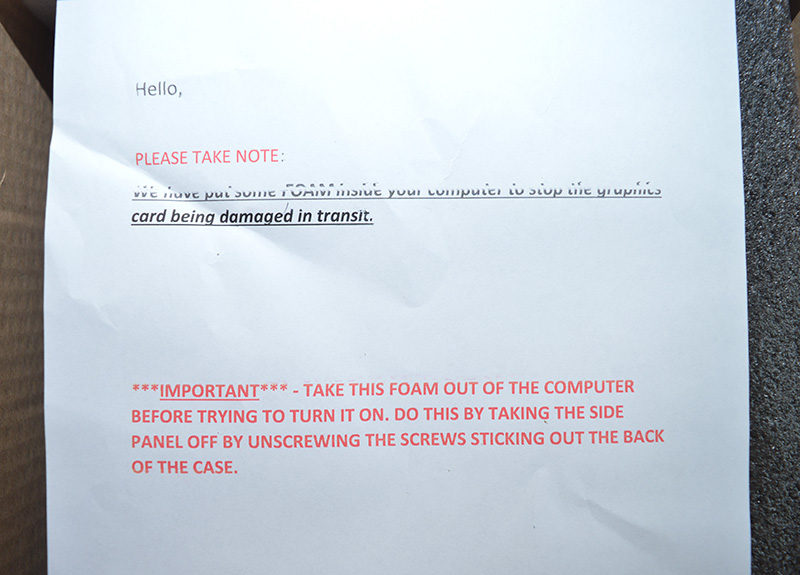
The system’s internal protection is impressive and Freshtech Solutions decided to use thick foam pieces around the rear fan, motherboard and graphics card. Ideally, I would have preferred a hardened instapak which tends to move around less freely and has a stronger mounting pressure. Saying that, the included foam inserts provide excellent protection and ensured the unit arrived in mint condition without any hardware faults.
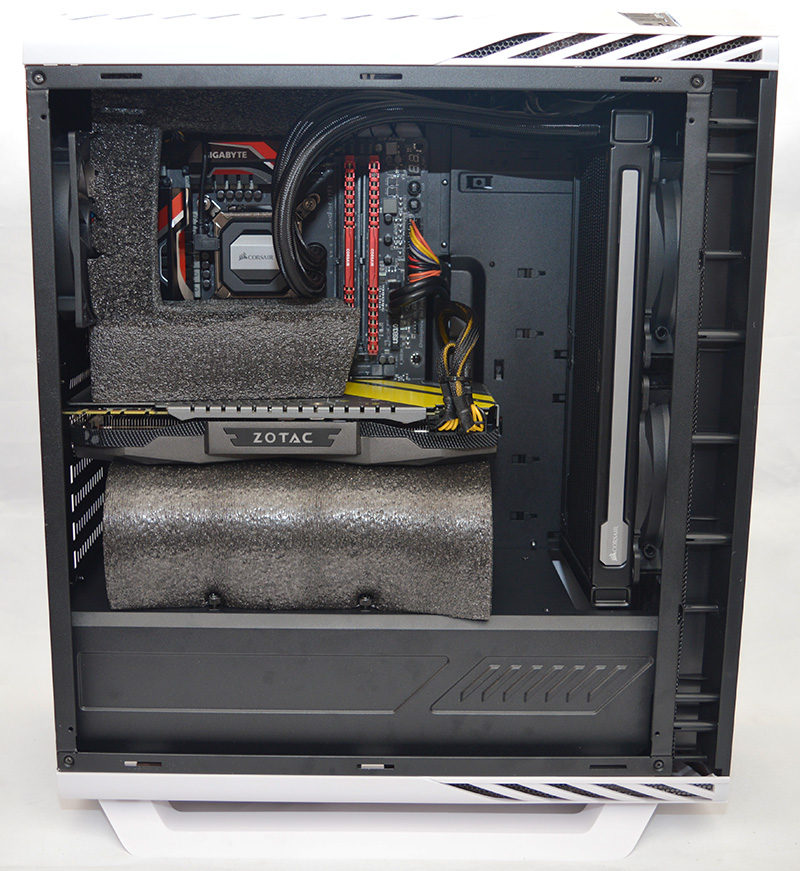
In terms of accessories, the system is bundled with component documentation, driver/software disks, cable ties, SLI bridge, spare fittings, SATA cables, memory packaging, PWM hub, AC adapter, Freshtech installation guide and World of Warships promotion.
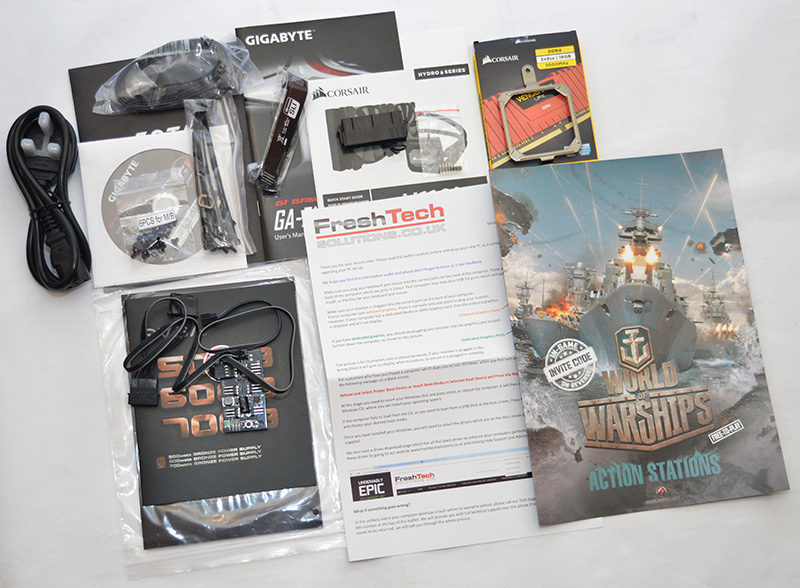
CPU-Z
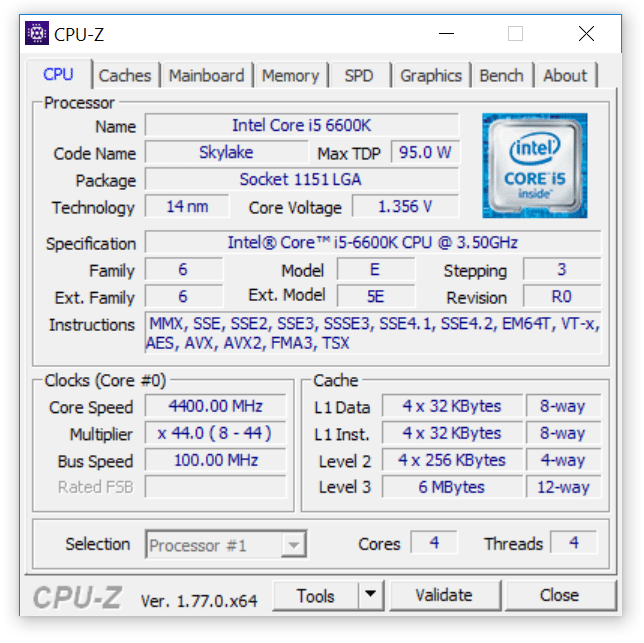
GPU-Z
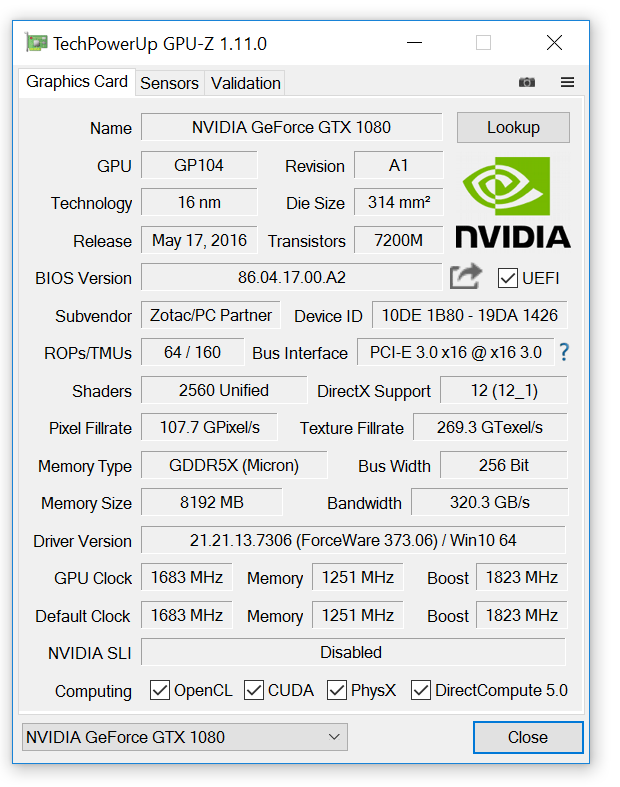
A Closer Look
The Aerocool Project 7 doesn’t follow a conventional design strategy and is bound to capture people’s attention. For example, the stabilising bars which protrude outwards from the main chassis is quite a novel idea although it tends to make the chassis wobble slightly. The case is full of ventilation grilles which enhance airflow and create a rather stylish appearance due to the dynamic cut-outs. Another great feature is the power supply cover which hides any excess cabling and contributes towards a remarkably tidy build. Despite being a budget chassis, there are two SSD mounts in the front and this can be useful to proudly display the decal on your favourite SSD. To be clear, the Aerocool Project 7’s plastic construction feels quite basic and gives the impression that the case requires the end-user to handle it in a delicate manner. However, when you take into account the price point and solid internal layout, it’s a suitable choice for this particular system. If you’d like to learn more about the Aerocool Project 7, feel free to check out the full review here.
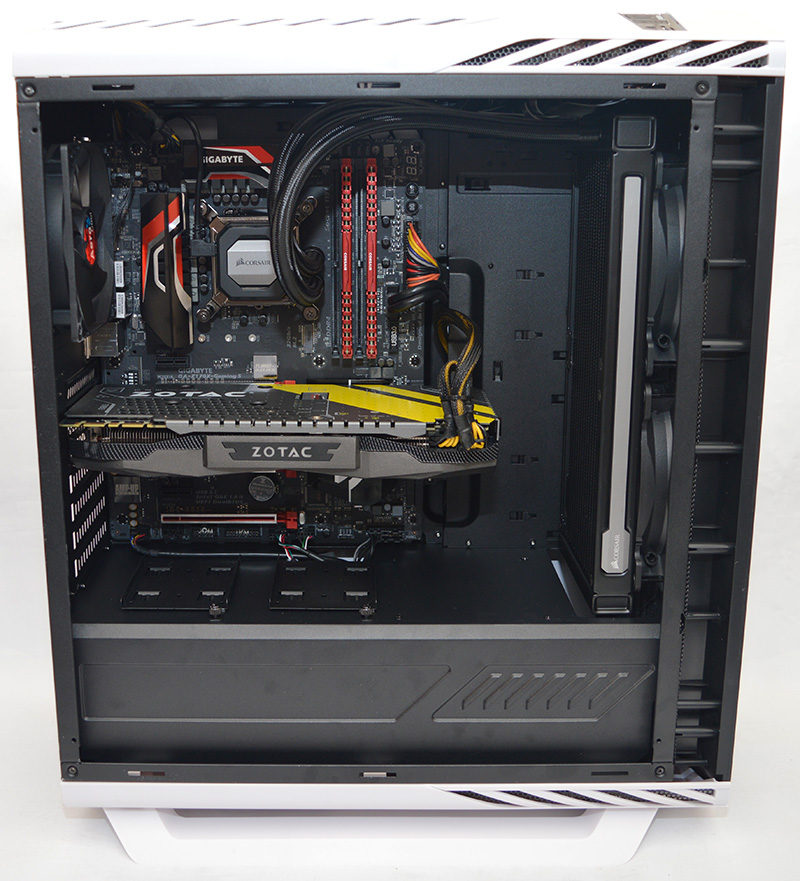
Sadly, it’s quite difficult to capture the chassis’ extravagant lighting on camera but rest assured, it looks amazing whichever colour you select.

Freshtech Solutions appear to have settled on a red and black colour scheme for the internal section which complements the chassis’ white exterior. Additionally, the small white elements on the motherboard’s heatsink act as a reminder of the Aerocool Project 7 chassis and maintain a high level of synergy throughout the build. Saying that, the graphics card’s backplate contains a yellow hazard print which looks slightly out of place. I can forgive this though because the product’s gunmetal grey styling is fantastic and a real treat to look at.
On another note, the Corsair Vengeance LPX 3000MHz memory has a simplistic yet elegant design and doesn’t overawe the entire build. Also, the Corsair H110i GT is superb and features a sophisticated block supporting RGB illumination. Unfortunately, it wasn’t possible to mount the radiator in the roof due to the case’s restriction. This slight annoyance was dealt with really well and I’m glad to see the tubing was positioned on the top side to allow for a more attractive cabling run.
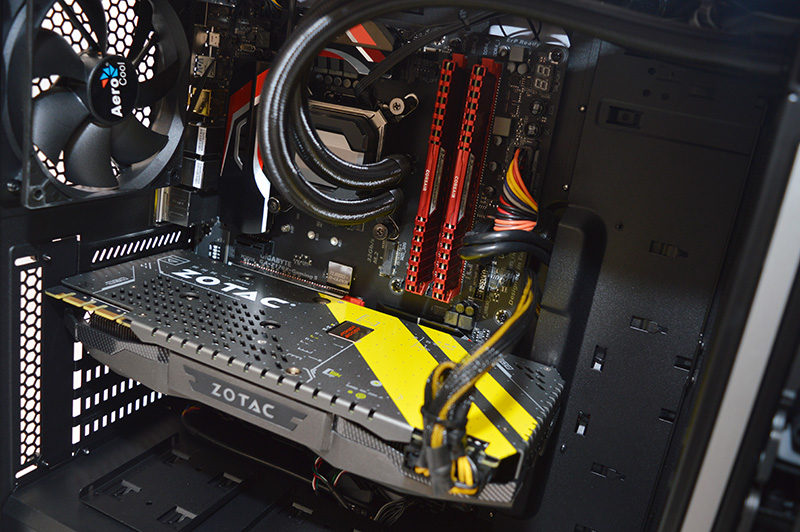
Originally, closed-loop coolers revolved around ugly FEP tubing or a standard rubber coating. While this can be described as serviceable, it doesn’t evoke a premium feel in the same way as custom loop solutions. Thankfully, the situation has improved and Corsair’s latest offering is based around tubing with a soft, braided finish. As you can see, this looks absolutely fantastic and creates the impression that the cooler isn’t produced on a mass scale.
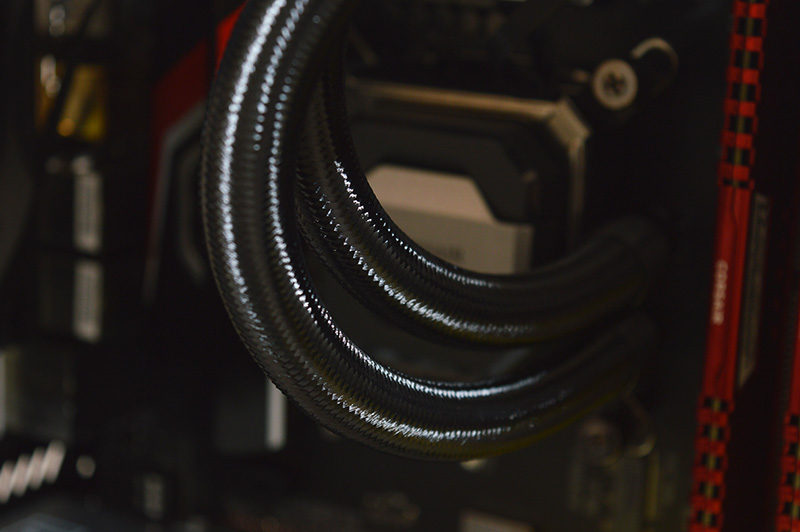
The graphics card’s cabling is completed to a high standard and the strong zip-tie mount conceals any excess wiring extremely well. Not only that, the connectors easily slot into place without the cabling run feeling overly tight. Therefore, there shouldn’t be any undue pressure applied to the connectors and I doubt the fitting will come loose over time.
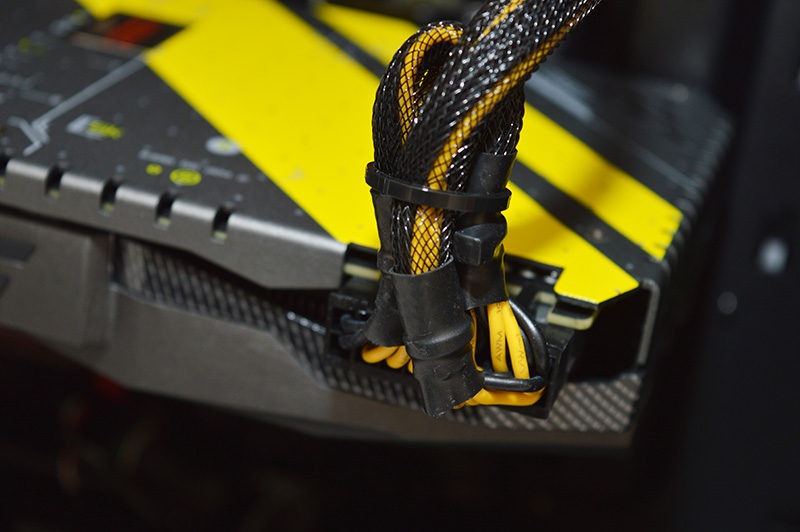
From this angle, we can see the USB 3.0 header, front audio and 8-pin EPS cable have been attached in a neat, logical cable run. Additionally, the SATA cables are difficult to see unless you inspect the system closely. This is due to the cable management plate which hides the majority of the cable length. Even the Corsair Link data cable is routed through the case properly and managed in a professional manner. On another note, I’m glad to see the GPU doesn’t bend downwards in an ugly fashion and remains relatively straight.
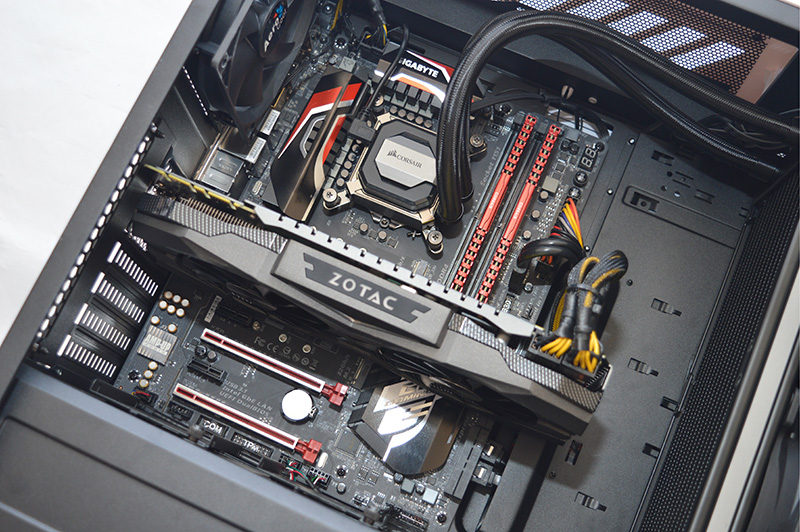
The system’s non-modular power supply and limited room around the rear chamber complicate the cable management process by a considerable degree. Despite this, Freshtech Solutions managed to couple the essential cables using a generous supply of zip-ties and the integrated cable routeing zone. Even though the cabling area is large enough to hide a good amount of the cabling, I’d prefer the chassis to opt for rubber grommets instead. When you consider the limitations imposed by the system’s parts, I think the end-result is pretty solid. Interestingly, Freshtech Solutions decided to disregard the PWM hub and hook up the fans directly to the motherboard or via y-splitters.
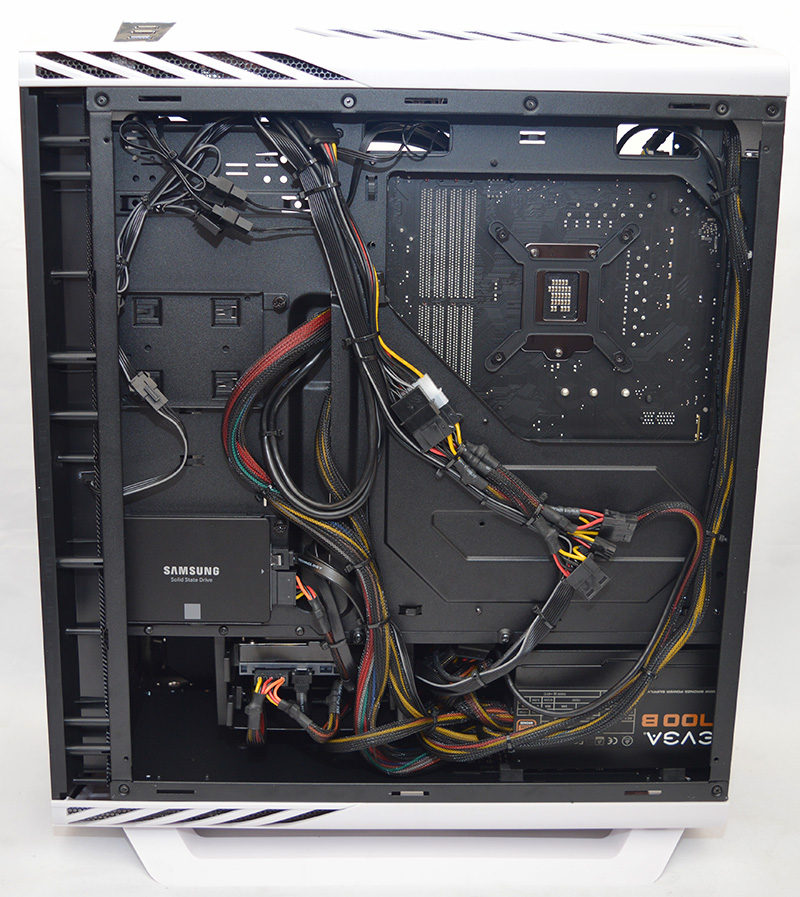
Towards the storage area, we can see the larger cables have been securely held down with a number of strong zip-ties. It’s important to note that the zip-ties aren’t going to buckle under pressure because the width is kept to a sensible figure. Also, the SSD is mounted at the lowest position to easily connect the appropriate cables without extra wiring being on display. The mechanical drive slides into the HDD caddy and has a good amount of space to route the cables properly.
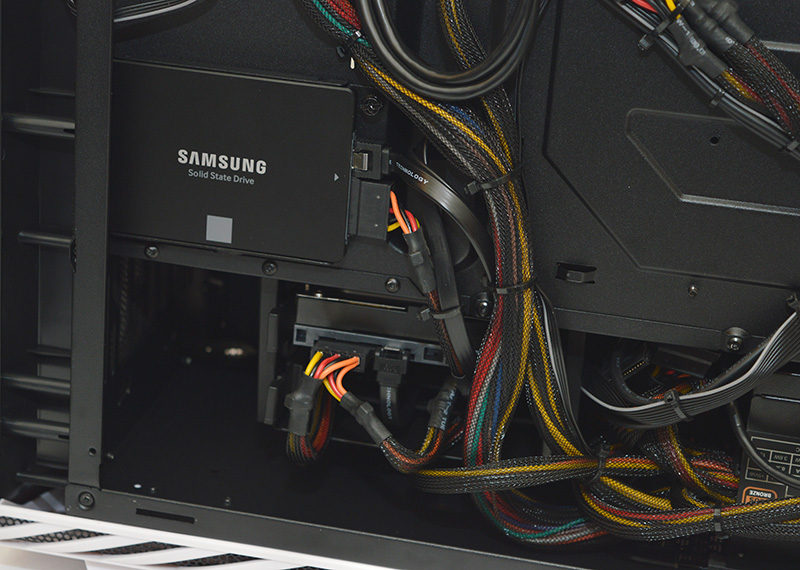
In the centre, Freshtech Solutions opted to connect two Molex cables and store the remaining Molex ends. While this doesn’t look particularly neat, it’s a sensible move and the cables tend to stay in position extraordinarily well. As a result, the side panel is easy to close and doesn’t brush against the Molex cables. The large CPU cut-out is quite handy and Freshtech Solutions ensured this area could be accessed easily. The cooler’s backplate is installed perfectly and aligned in a flush way.
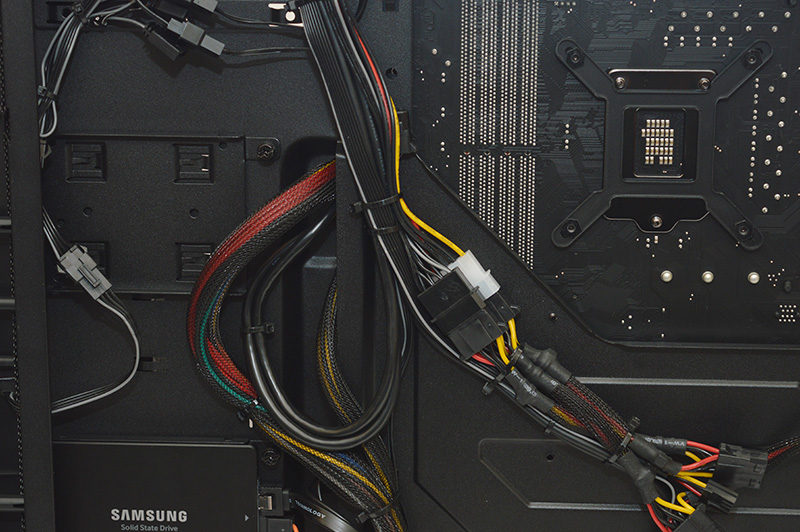
As expected, the non-modular power supply design is difficult to contend with and results in a huge number of cables surrounding the PSU. Unfortunately, this cannot be avoided and a characteristic of the cheaper non-modular format. Nevertheless, the extra SATA, Molex and PCI-E connectors are hidden really nicely within the PSU cover. This makes the decision to use a non-modular power supply less egregious.
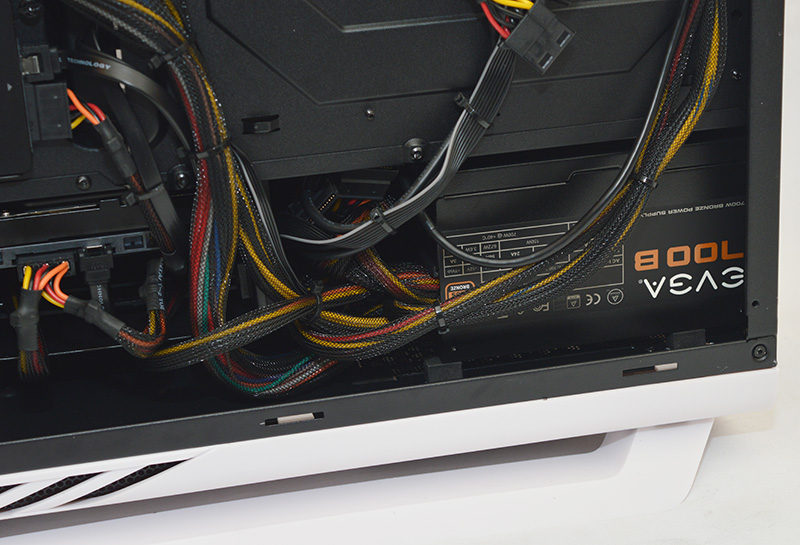
Testing & Methodology
To test each system or notebook, we want to stress every component of the system to check stability and performance, giving us an idea as to why those particular components were picked for this particular system. We use a wide variety of applications to gain a broad spectrum of results for comparing diverse aspects of system performance.
Unless specifically stated, all games are running at maximum settings but any vendor-exclusive features such as TressFX or PhsyX have been disabled to make the results fair. There are some titles where the maximum preset can be altered further in regards to AA, AF, Tessellation, and Draw Distance. To allow our readers to make the most informed decision, any additional options will be clearly labelled in this section. Please note each benchmark is run three times to maintain the highest level of accuracy.
Hardware
- Acoustic dBA meter
- AC “Killawatt” power meter
Software
- 3DMark
- AIDA64 Engineer
- Cinebench R15
- CrystalDiskMark
- CPU-Z
- GPU-Z
- HW-Monitor
- MSI Afterburner
- Passmark PerformanceTest 8.0
- PCMark 8
- Prime95
- WPrime
- Unigine Heaven 4.0
- Grand Theft Auto 5
- Rise of the Tomb Raider
- Hitman
- Far Cry Primal
PC Mark 8
The PCMark 8 Home benchmark includes workloads that reflect common tasks for a typical home user. These workloads have low computational requirements making PCMark 8 Home suitable for testing the performance of low-cost tablets, notebooks, and desktops. Home includes workloads for web browsing, writing, gaming, photo editing, and video chat. The results are combined to give a PCMark 8 Home score for your system. Download here.
3D Mark
The new 3DMark includes everything you need to benchmark your hardware. With three all new tests you can bench everything from smartphones and tablets to notebooks and home PCs, to the latest high-end, multi-GPU gaming desktops. Download here.
Grand Theft Auto V
Our GTA5 Benchmark is run on the standard benchmark with MSAA=Off, FXAA=On, Advanced Graphics Disabled and everything else set to their maximum values:

Rise of the Tomb Raider
Even though Rise of the Tomb Raider recommends graphics cards above 4GB for the Very High preset, we believe it’s the best option to stress graphics cards and distinguish between systems opting for different hardware. Of course, lower-end hardware can struggle with the benchmark and output some unusual results. FXAA is also enabled.
Hitman
To properly test DirectX 12 performance, the integrated Hitman benchmark is used and everything is set to maximum with FXAA set to on.
Far Cry Primal
In this game, the Ultra preset is selected with the HD texture pack and FXAA. Once the settings have been dialled in, the game’s built-in benchmark is run three times with an average taken to display the performance.
Cinebench R15
Cinebench is a widely respected benchmark for testing the performance of x86 CPUs. The program allows you to test single and multi-threaded performance as well as GPU performance by rendering with Open GL. Download here.
Super Pi
Super PI is a single threaded benchmark that calculates pi to a specific number of digits. Super PI is a single threaded benchmark ideal for testing pure, single threaded x87 floating point performance and while most of the computing market has shifted towards multithreaded applications and more modern instruction sets, Super PI still remains quite indicative of CPU capability in specific applications such as computer gaming. Download here.
AIDA64 Engineer Edition
AIDA64 Engineer is a streamlined Windows diagnostic and benchmarking software for engineers. It has unique capabilities to assess the performance of the processor, system memory, and disk drives. AIDA64 is compatible with all current 32-bit and 64-bit Microsoft Windows operating systems, including Windows 8 and Windows Server 2012. Memory and cache benchmarks are available to analyze system RAM bandwidth and latency. Download here.
CrystalDiskMark
CrystalDiskMark is a portable storage drive benchmark utility that enables you to measure sequential and random read/write speeds on different block size data. CrystalDiskMark will work with any storage drives including hard drives, SSDs and USB flash drives. Download here.
Passmark
The PassMark Advanced Network Test (which is part of PerformanceTest) is designed to test the data transfer rate between two computers both of which must be running PerformanceTest. One of the computers must act as the server and will sit waiting for a connection. The other computer acts as a client. It connects to the server machine and sends data to it for the duration of the test. You can download a trial version of PerformanceTest from here.
Acoustic Performance
The amount of noise produced by any computer is a vital consideration for most buyers, even gamers don’t really want a noisy PC because less noise is always better. We use an acoustic dBA meter held 2 feet behind our test system at idle and under load to get the idle and load noise levels for the system. For idle we allow the system to sit at the Windows desktop, for load we let Unigine Heaven 4.0 and Prime95 to loop together – we take the acoustic measurements 5 minutes into both of these scenarios.
Power Consumption
To test power consumption we measure the total system power draw during idle and load scenarios. For idle we allow the system to sit at the Windows desktop, for load we let Unigine Heaven 4.0 and Prime95 to loop together – we take the power measurements from the “Killawatt” AC power meter 5 minutes into both of these scenarios at the same point.
Temperatures
To test thermal performance we measure average CPU and GPU core temperatures during idle and load scenarios. For idle we allow the system to sit at the Windows desktop, for load we let Unigine Heaven 4.0 and AIDA64 to loop together – we take the temperature measurements from within CPUID HWMonitor 5 minutes into both of these scenarios at the same point. For load we take the average of the maximum temperatures, for idle we take the average of the minimum temperatures.
Synthetic Benchmarks
PC Mark 8
In PC Mark 8, the system manages to attain a superb score and contend with rival products sporting an i7-6700K. Evidently, the system’s CPU and GPU combo are more than sufficient for basic tasks including photo editing, video playback and office tasks.
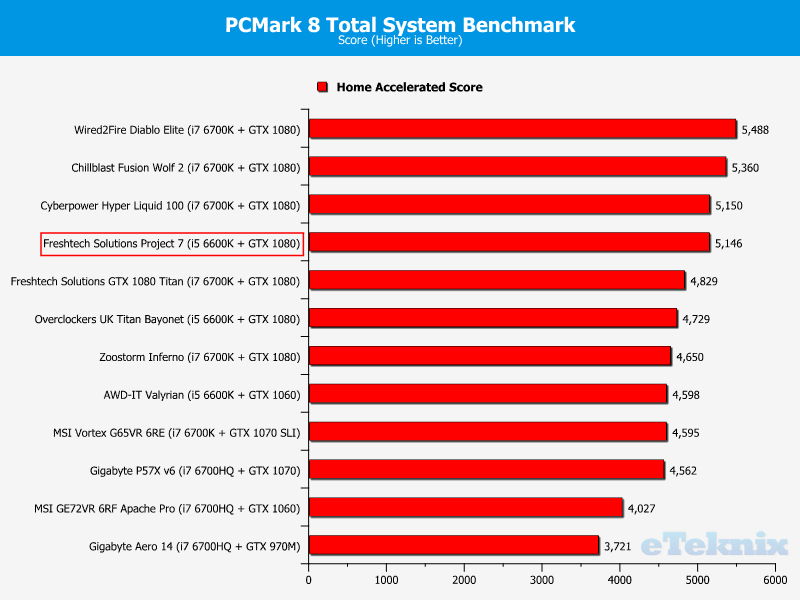
3DMark
The Freshtech Solutions Project 7’s graphics card is capable of astonishing performance and doesn’t falter even when tackling the Fire Strike Ultra benchmark. As expected, the scores are slightly lower than a number of GTX 1080-based alternatives due to the CPU’s lack of hyperthreading. Saying that, the difference isn’t groundbreaking enough to justify the i7-6700K’s higher price point.
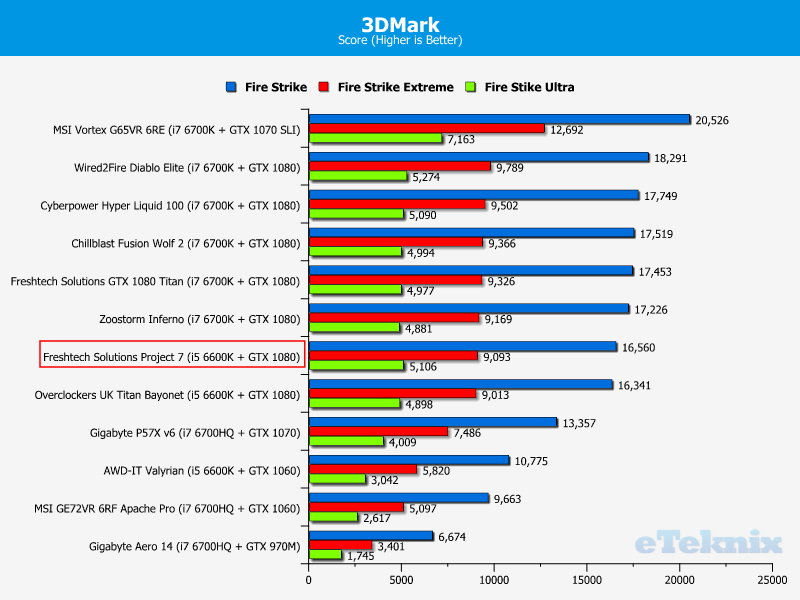
Gaming Performance
Grand Theft Auto 5
Even though Grand Theft Auto V is a relatively old title, it’s a firm favourite among PC gamers and scales well on a wide range of hardware configurations. During 1080p testing, the system excelled and easily surpassed the 120 frames-per-second mark. However, I did notice a few examples of stuttering and erratic frame dips. Thankfully, this was resigned to the integrated benchmark and the actual gameplay felt perfectly smooth. Once the resolution is increased to 2560×1440, the frame rate only drops by a small amount and the minimum remains well above 60. Rather impressively, the system’s GTX 1080 has enough horsepower to achieve an average frame rate of 60 while pushing an extreme number of pixels.
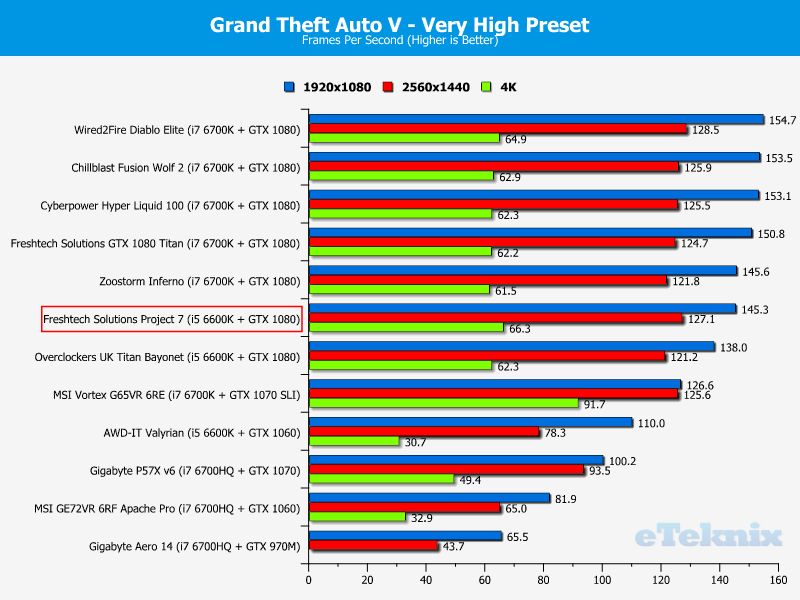
Rise of the Tomb Raider
In Rise of the Tomb Raider, the system upholds a staggeringly good user-experience and the game’s extreme texture quality doesn’t cause any sudden frame drops while running demanding sections. At 1920×1080, the performance is absolutely stunning and enough to please those who invest in a high-refresh display. Once the resolution is set to 1440p, the average frame rate drops by a large degree but it’s still way above the 60 target. Unfortunately, the game proves too taxing on a 4K display and it’s recommended opt for the High preset instead.
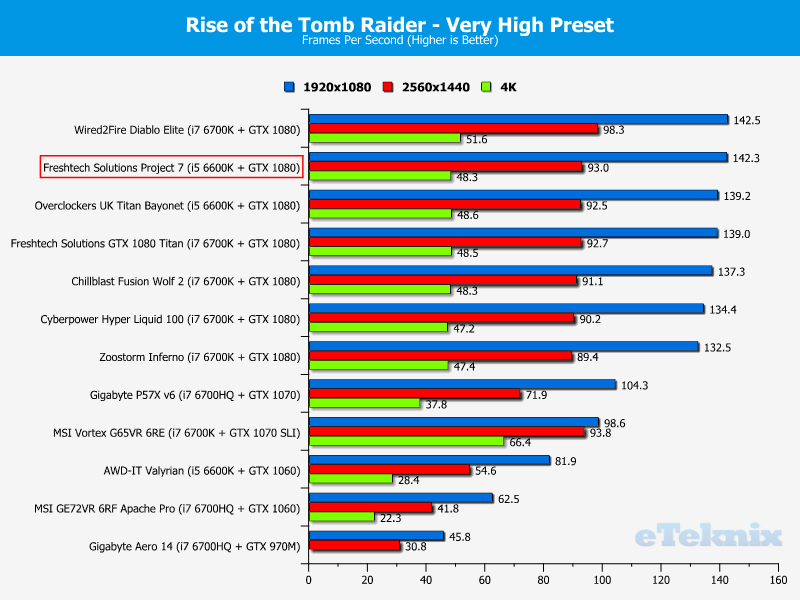
Hitman
Despite Pascal’s mediocre DirectX 12 credentials, the GTX 1080 employs brute force to achieve exemplary performance numbers. As you can see, the system alongside a 1920×1080 display breaks the 110 frames-per-second barrier and maintains a high level of fluidity. If you decide to play the game at 2560×1440, the frame rate hovers around the 90 range and remains perfectly playable. Once again, the GTX 1080 hasn’t got enough in the tank to reach 60 frames-per-second on a 4K panel but it’s not too adrift of this noble aim.
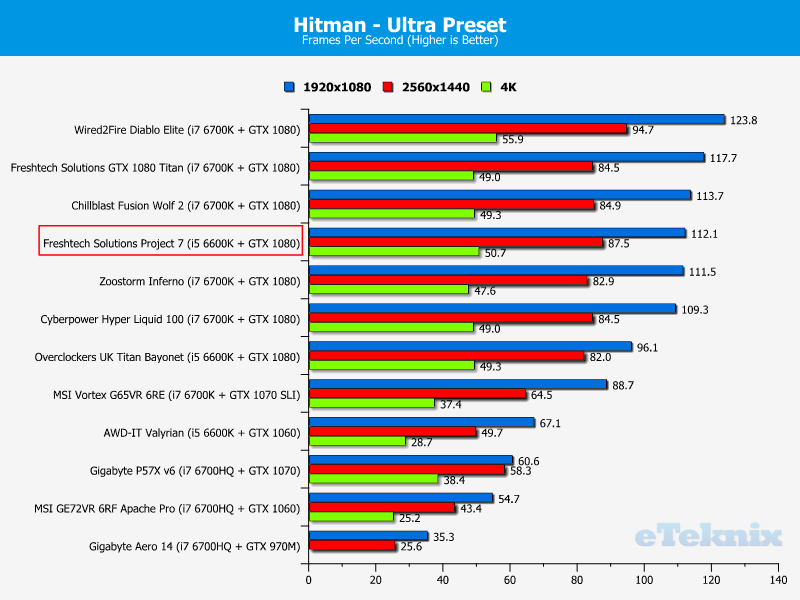
Far Cry Primal
Next up is Far Cry Primal which tends to put a strain on many graphics card when the Ultra preset combines with the HD texture pack. At 1920×1080, the system excels and doesn’t exhibit any hitching or noticeable frame dips. After increasing the resolution to 1440p, the system maintains a very stable and consistent frame rate although the minimum begins to creep below 60. During 4K testing, the GTX 1080 struggled and there are moments when the frame rate plummets.
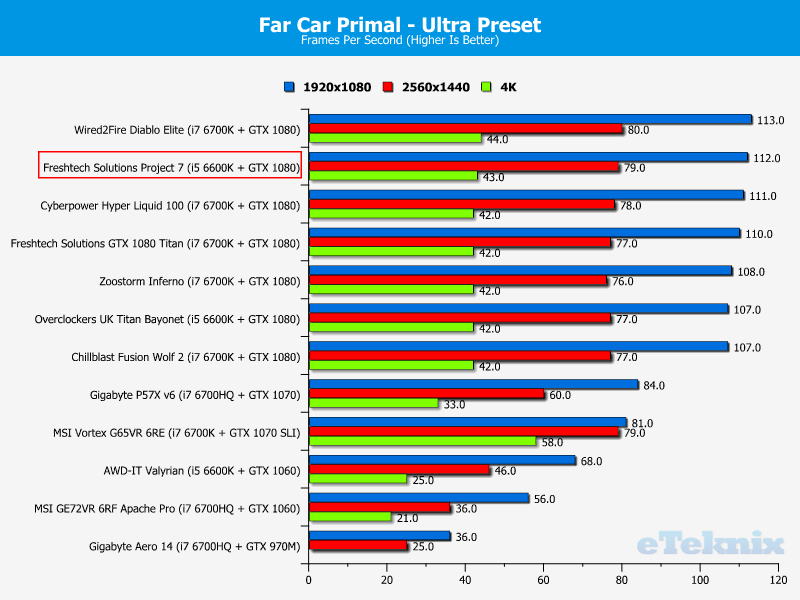
CPU & Memory Performance
Cinebench R15
The Freshtech Solutions Project 7’s i5 6600K runs at an overclocked frequency of 4.4GHz which helps improve the performance compared to the stock profile. Saying that, it’s not enough to make up for the lack of four extra threads and this explains why the i7-6700K is such a dominant force in multi-threaded workloads.
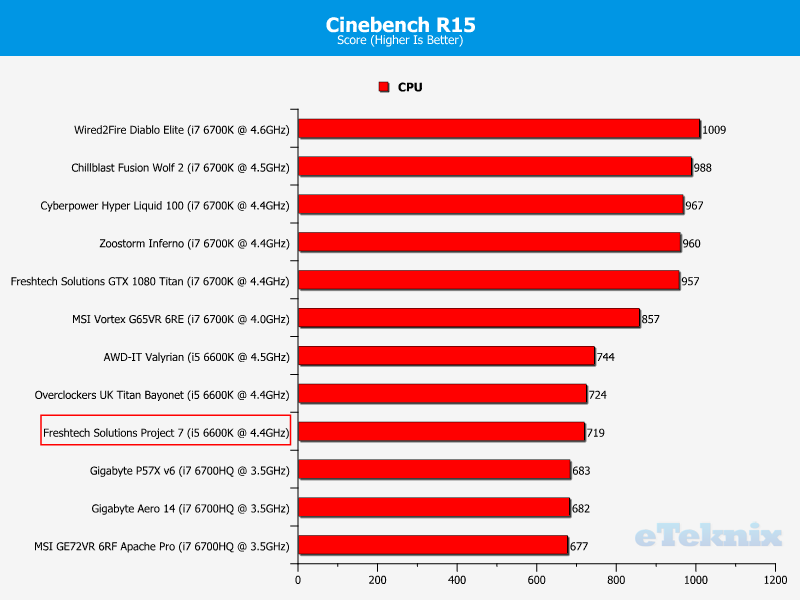
WPrime
On a similar note, the system’s i5 6600K cannot compete with the i7-6700K and records a significantly slower calculation time. Despite this, it’s still a commendable result and just edged the Overclockers UK Titan Bayonet which opts for a similar configuration.
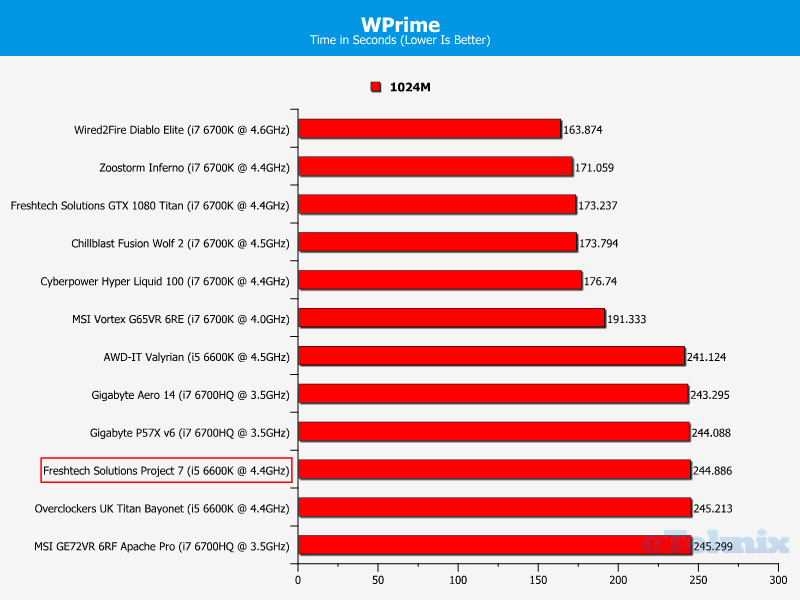
AIDA64 Engineer
In terms of memory bandwidth, the system records good figures although the read speed lingers behind the AWD-IT Valyrian. On a more positive note, the write rate is fantastic for a 3000MHz dual-channel kit and all the other data is within the range I anticipated.
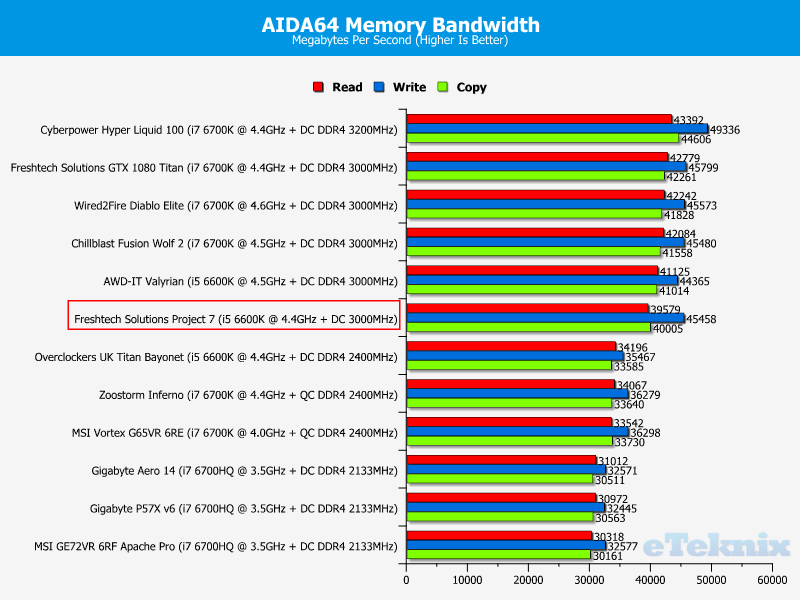
Storage and USB Performance
CrystalDiskMark – Sequential Read
The Samsung 850 EVO offers fantastic read speeds and eclipsed many other products utilising the SATA interface. Of course, NVMe solutions are in a different league and this is to be expected given the price difference. The system’s secondary drive fared pretty well and achieved an average figure just below 200MB/s. On another note, the USB 3.0 rate was good.
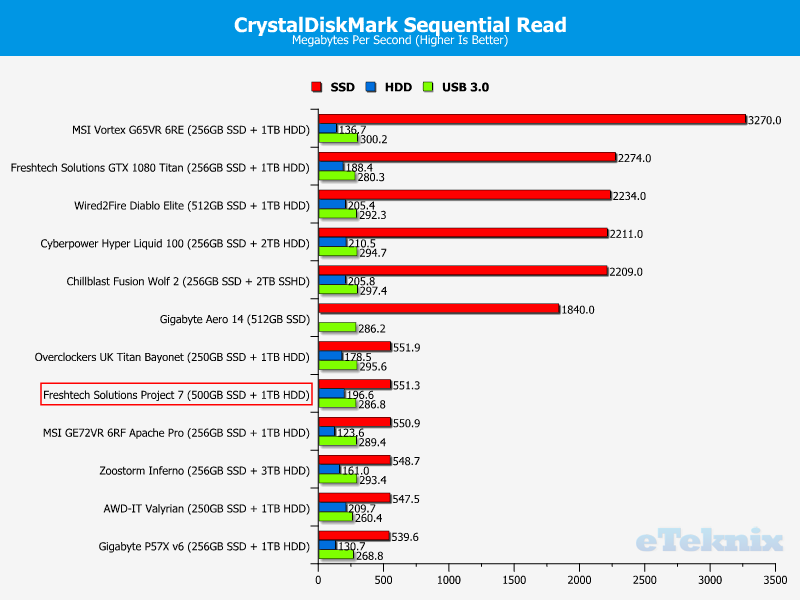
CrystalDiskMark – Sequential Write
Here we can see the boot SSD has a wonderful write result given the SATA format and easily defeated a large number of other storage options. The mechanical drive’s write performance wasn’t noteworthy but it’s perfectly acceptable. The USB 3.0 write rate was pretty decent and almost exceeded 160MB/s.
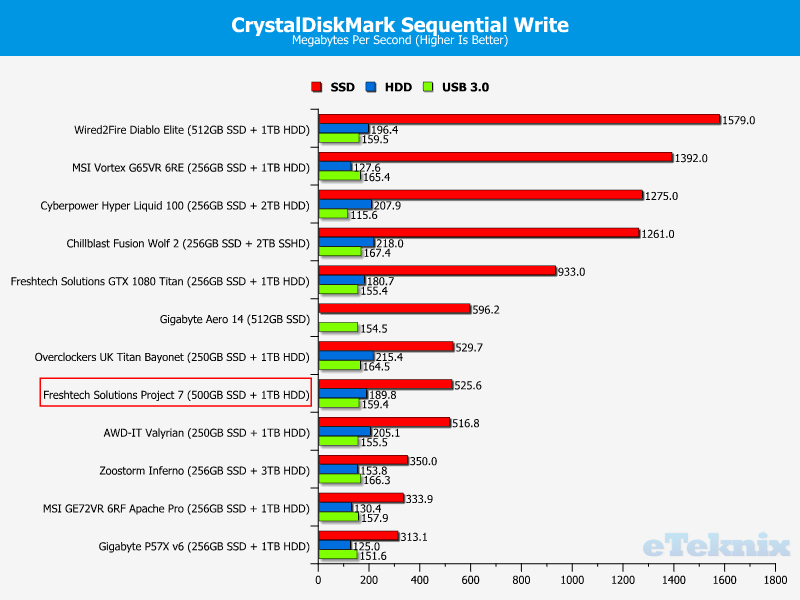
Networking Performance
Passmark PerformanceTest 8.0
Ethernet (LAN)
The system’s motherboard contains two networking chips and allows you to select either the Intel I219V or Killer E2200 NIC. For the testing purposes, the default networking solution was deployed which performed really well and maintained a small range between minimum and maximum figures. As a result, the networking performance should remain very stable.
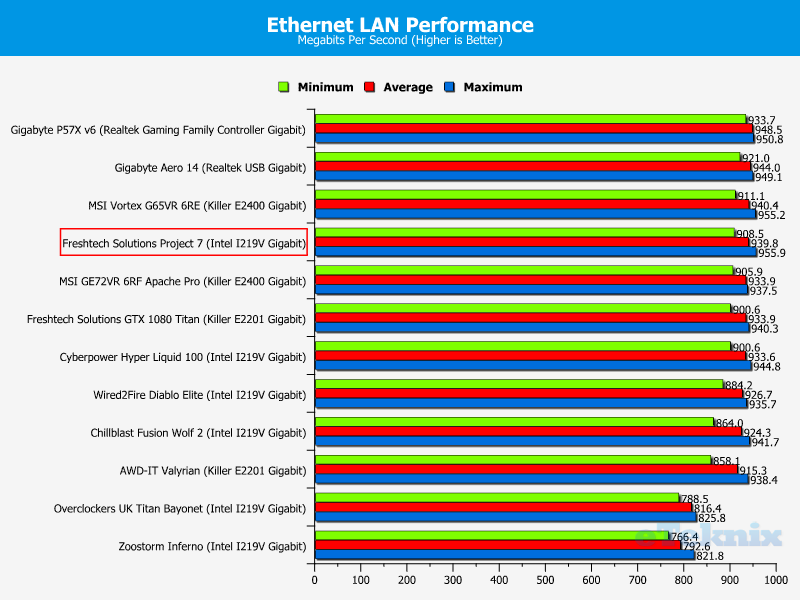
Acoustic, Power & Thermal Performance
Acoustic Performance
During idle conditions, the system is relatively quiet and I couldn’t really tell the difference between its 37.3 decibels result and some previously tested systems around the 35 decibels mark. Under load, the noise output hardly changes and this raised questions if the AIDA64 stress test was actually working correctly. To my amazement, nothing was amiss and the system’s noise levels are exceptionally low. Saying that, I did detect an intermittent rattling noise and this could stem from either a loose radiator mount or fan blade vibrations. Although the rattle is so gentle you’d find it difficult to hear from a suitable distance.
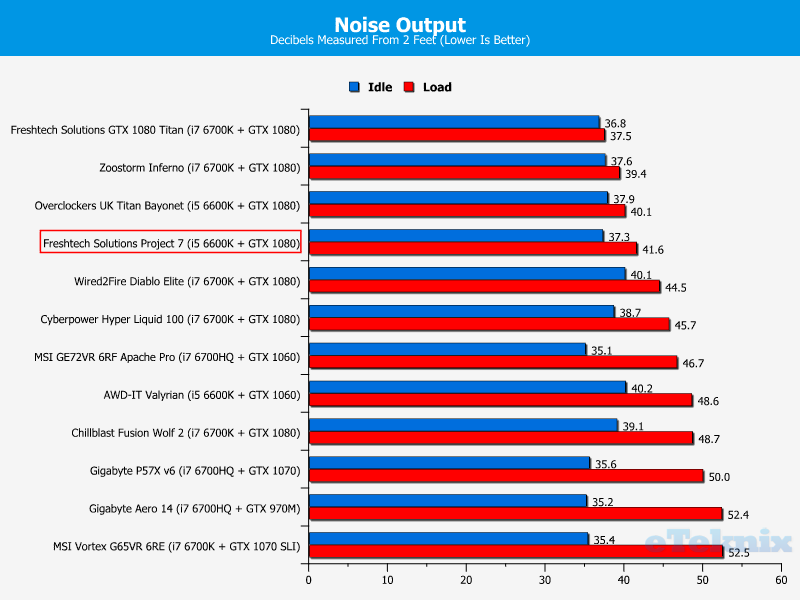
Power Consumption
Even though the system has an overclocked processor and potent graphics card, the power draw stays under 270-watts. This showcases how efficient modern components are and explains why high wattage power supplies can be so redundant.
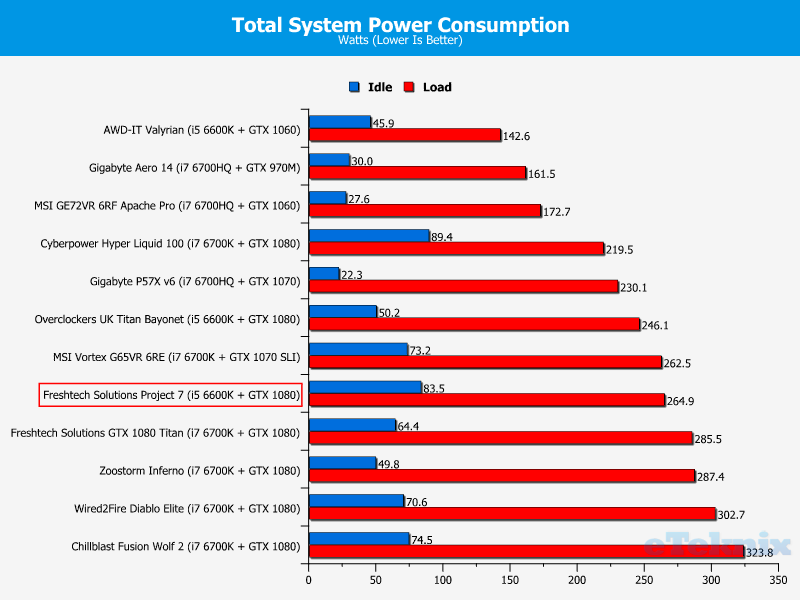
Thermal Performance
The system’s CPU cooling solution is capable of extraordinary performance and easily contends with the 4.4GHz overclock. As you can see, the load temperature average hit 63C and the highest peak on the hottest core reached 69C. This is well under the CPU’s thermal limit and there’s probably additional headroom to push the processor to 4.5-4.6GHz with a minor voltage boost. Also, the unit’s graphics card was quite cool throughout a range of stressful benchmarks and doesn’t exceed 85C.
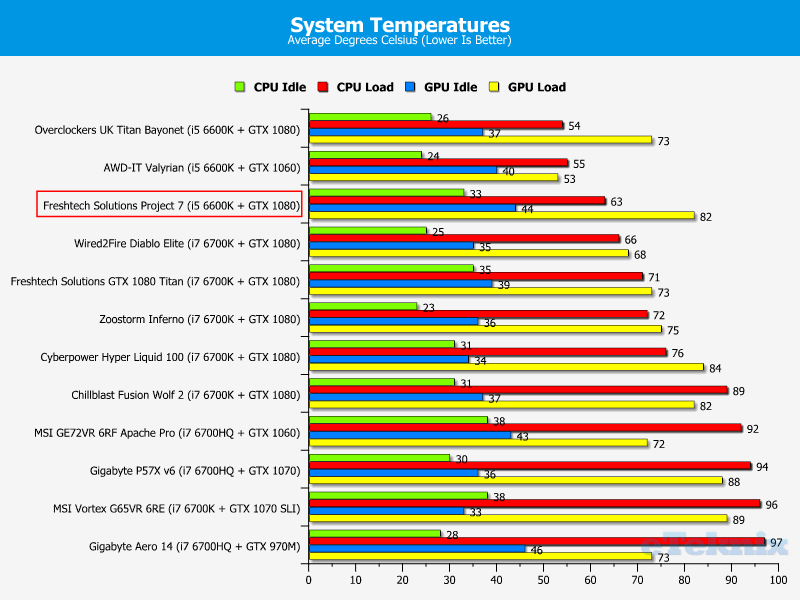
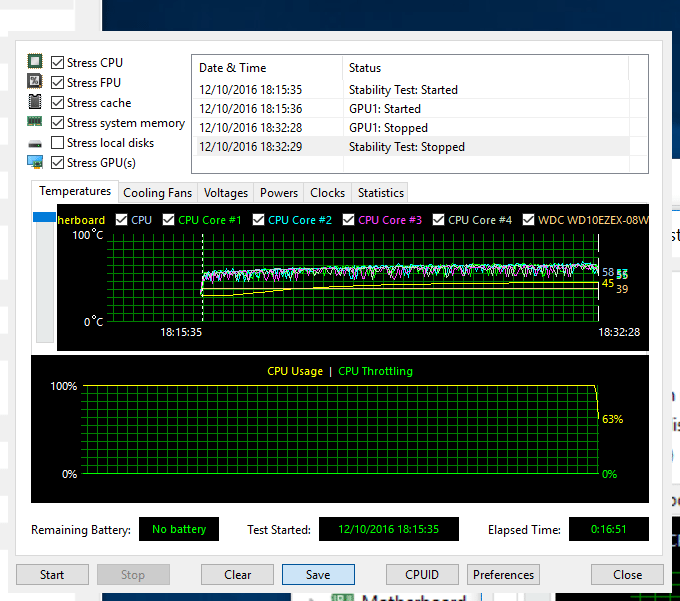
Final Thoughts
Pricing
At the time of writing, the Freshtech Solutions Project 7 is available from the company’s website for £1599.00. As per usual, to determine a system’s value proposition, we endeavour to compile an identical self-build and compare the price. This allows us to analyse the fee (if any) that a system integrator is choosing to charge customers for its services. Please note all prices include shipping and we don’t permit Windows 10 keys from disreputable sites. Of course, you might want to acquire a digital code much cheaper, but it’s not something we’re happy to recommend as many keys can be MSDN-based with limited activations. When looking into the price of custom water loop builds, it’s more involved due to the increased selection of parts.
- Case: Aerocool Project 7 = £79.93*
- Motherboard: Gigabyte Z170X-Gaming 5 = £164.99
- Processor: Intel Core i5-6600K Overclocked to 4.4GHz = £226.98
- Processor Cooler: Corsair H110i GT Hydro Liquid Cooler = £99.99
- System Memory: Corsair Vengeance LPX 16GB dual-channel DDR4 3000MHz = £80.99
- Main Boot Drive: Samsung 500GB 850 EVO SSD = £149.99
- Additional Storage Drive(s): Western Digital Blue 1TB 7200RPM = £44.96
- Graphics card: Zotac GTX 1080 AMP Edition 8GB GDDR5 = £608.99
- Power Supply: EVGA 700B 700-watt 80+ Bronze non-modular = £69.96
- OS: Windows 10 Home = £74.99
*Please note, the case could only be found in a black colour but I doubt this impacts on the pricing too much.
Once totalled up, an identical self-build comes to £1601.77 which actually costs £2.77 more than Freshtech’s creation. To be fair, the current asking price of the i5-6600K is ludicrous and more than some i7 processors from previous generations. Unfortunately, this is the current market value and component prices have increased substantially since the Brexit vote. When you take into account the widespread price rises, you have to commend Freshtech for maintaining an attractive price point.
Overview
The Freshtech Solutions Project 7 is based on an innovative design which should appeal to consumers who enjoy striking RGB illumination. In particular, the chassis’ front lighting creates such a unique finish and the ability to select from a wide range of gorgeous colours is superb. Also, the case houses a few transitional effects which act as a talking point and is bound to capture people’s imagination. Of course, I wouldn’t recommend using these effects for desktop use because they are distracting and probably going to cause eye fatigue. Nevertheless, it’s a fun aspect of the system and helps it to stand out from the competition.
On another note, the case’s bizarre shape and elongated support bars have a certain charm which makes you admire the system’s visual exuberance. Unfortunately, the chassis’ budget, plastic construction doesn’t evoke a premium feel and the protruding feet cause the system to wobble. If you adopt a gentle approach near the rig, this shouldn’t happen on a regular basis. The case also has a number of pretty decent features including front SSD bays and a large PSU cover. This aids cable management and allows for a cleaner finish. Throughout the build, the cabling has been finished to a high standard and the routeing is remarkably clean considering the power supply’s non-modular design. Also, the case’s lack of rubber grommets isn’t ideal and complicates the process slightly. Although, there is a section which hides the majority of cable length quite well. Overall, I think Freshtech Solutions have done a stellar job as demonstrated by the logical cabling runs and copious supply of zip-ties.
Even though the system has an array of beautiful hardware, it’s difficult to see once the side panel has been shut. Freshtech Solutions should have included some internal case lighting via LED strips or something like the NZXT Hue+. It’s a shame because the entire front section is lit up in a bold fashion while the main system remains obscured. The only elements you can look at is the Zotac RGB logo and Corsair pump branding. Both of these support customisable lighting which can be useful to focus on a particular shade. To be fair, the darkened internal portion is easily fixed and shouldn’t increase the asking price by a large degree once fixed.
The system’s Corsair H110i GT cooling solution is a work of art and the textured tubing looks absolutely fantastic. Not only that, the product is able to easily cope with the i5-6600K running at 4.4GHz and reported a maximum load reading of 69C on the hottest core. Also, this was achieved at respectable noise levels thanks to the Quiet profile. During idle conditions, it’s even better and the system is almost silent. The only oddity I experienced was some rattling during stress testing which appeared to dissipate after a while. Perhaps, a screw or another fitting has come away ever so slightly and resulted in minor vibrations.
In terms of storage, the system’s boot SSD is one of the finest options around and consistently outputs impressive read/write rates. Granted, the SATA3 interface is quite limiting and pales in comparison to NVMe solutions. Clearly, Freshtech Solutions could have invested in a Samsung SM951 or similar but it would have been difficult to achieve the 500GB capacity without dramatically increasing the price. Honestly, I think they made the right call and the performance should be fine for most individuals.
The system’s GTX 1080 doesn’t need any introduction and upholds an astonishing gaming experience even when a 4K monitor is deployed. Throughout the testing procedure, the graphics card managed to maintain excellent performance numbers, especially at 1920×1080 and 2560×1440. Interestingly, these resolutions make 60 frames-per-second an easy target and it’s unlikely that the minimum figure will drop below this. As a result, the gameplay remains perfectly fluid and stable enough to please those who easily notice frame rate fluctuations. As expected, the system isn’t quite able to offer a 60 frames-per-second 4K gaming experience at the highest presets but it’s surprisingly close. The data shows that the performance tends to hover between 43-65 frames-per-second depending on the benchmark. This doesn’t tell the whole picture because some titles have sudden frame dips and it’s recommended to scale back the settings to ensure the user experience doesn’t feel too jarring. Overall, the GTX 1080 is unbelievably powerful and the performance isn’t held back by the i5-6600K’s lack of hyperthreading.
Pros
- Attentive packaging
- Eye-catching design
- Excellent networking
- Extremely quiet
- Fantastic price for a complete GTX 1080 system
- Good cable management
- i5-6600K doesn’t inhibit the GTX 1080’s potential
- Marvellous gaming performance
- Suitable for 4K gaming at demanding settings
- Wonder thermal results
Cons
- Aerocool 7 chassis doesn’t feel overly sturdy
- Lack of internal lighting makes it hard to see the components
“The Freshtech Solutions Project 7 is a visual treat and greatly benefits from the chassis’ spectacular lighting system. Not only that, the system contains a balanced selection of components, remains really quiet and offers a premium gaming experience while being cheaper than an equivalent self-build.”

Freshtech Solutions Project 7 GTX 1080 Gaming PC Review
Thank you Freshtech Solutions for providing us with this sample.



















